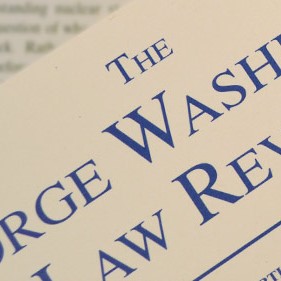Marin K. Levy · March 2013
81 GEO. WASH. L. REV. 401 (2013)
Federal appellate judges no longer have the time to hear argument and draft opinions in all of their cases. The average annual filing per active judgeship now stands at 330 filed cases per year—more than four times what it was sixty years ago. In response, judges have adopted case management strategies that effectively involve spending significantly less time on certain classes of cases than on others. Various scholars have decried this state of affairs, suggesting that the courts have created a “bifurcated” system of justice with “separate and unequal tracks.” These reformers propose altering the relevant constraints of the courts, primarily by increasing the number of judges or decreasing the judiciary’s caseload. These approaches, however, have not gained political traction thus far and seem unlikely to in the foreseeable future.
This Article takes a realist approach and argues that we should recognize judicial attention for what it is—a scarce resource—and assess whether there is evidence that the courts are allocating that resource improperly. Loosely borrowing the framework of resource allocation from the political science and economics literatures, this Article considers how to apply the concepts of inputs and outputs to the work of the federal appellate courts, suggesting judicial attention as the input and a combination of error correction and law development as the output. It then makes the preliminary case that the courts’ case management techniques in fact largely comport with an output-maximization approach, while still limiting inequality of outputs across cases. This Article concludes that the courts’ overall strategy nevertheless presents opportunities for enhancement. It suggests several improvements, focusing on the review structure of cases that receive the least amount of judicial attention, to help ensure that all federal cases receive an appropriate form of appellate review.

